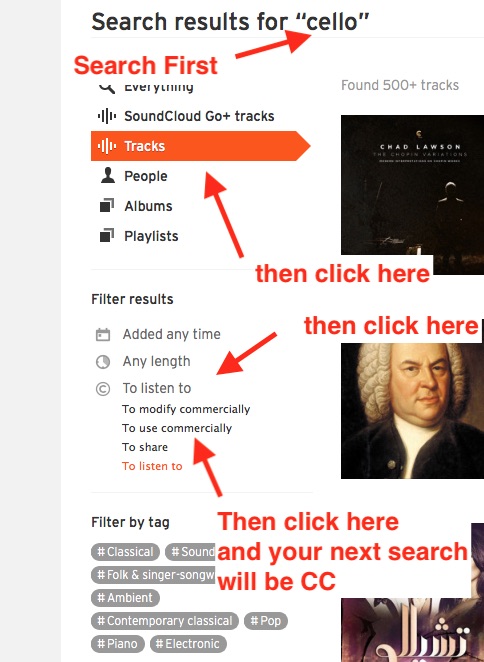-
Posts
111 -
Joined
-
Last visited
Content Type
Profiles
Forums
Articles
Everything posted by Raafi Rivero
-
Looks amazing!
-

NAB 2018 - Kinefinity and Atlas Lens Co Orion Anamorphic
Raafi Rivero replied to DBounce's topic in Cameras
About half the shots in that are 24p. And nearly every shot in the first 5.5mins (and more than half overall) in my Terra 4k review are regular motion. But you can judge parts of image quality based on a still frame. David Fincher shoots everything in slow-motion, btw, then delivers almost everything in regular speed just so has the option - so there's your utility. I agree that the next hurdle is to use the cameras for narrative stuff. Working on something in that arena now. Stay tuned. -

NAB 2018 - Kinefinity and Atlas Lens Co Orion Anamorphic
Raafi Rivero replied to DBounce's topic in Cameras
... Anywayz.... I got to test the Atlas Orion 40mm on the Kinefinity Mavo. (am also the talent in a few shots since it was just a small number of us). Some of the shots are from another test the night before. I like performance of both lens and camera: -
I doubt it's the same sensor for the Pocket 4k as that looks like it's still Super-16 sized but there is a lot of speculation the Terra 4K shares a sensor with the GH5S
-
Outro outtake with the full IronFilm mention: https://www.dropbox.com/s/t58pz9ggu0oe5q8/ironfilm.m4v?dl=0
-
@IronFilm I'll send you the outtake where I say I'm working on doing better audio because of you
-
Here's my full review. I also wrote a more detailed post at No Film School.
-
I actually woke up this morning wondering if there are other areas of film production that can be completely re-thought (and improved!) the way that FCPX improved the concept of the timeline. It is a very different way of thinking about laying out shots. But because it is so unmoored from legacy systems and thinking, I feel that much more free to experiment with ideas. It took awhile to learn, and all of my processes are not fully integrated with the software. But cutting and iterating through concepts is so much faster that I wish I could work with it for every project.
-
I use a mix of http://freemusicarchive.org and you can search SoundCloud with a checkbox for CC-licensed music. They kind of hide the option for CreativeCommons a couple clicks down, after you've actually searched for something. But it's good for searching genres or for a specific instrument. my recipe for SoundCloud on the attached image.
-
At the same time, some of the most brilliant movies are considered great because they appeal to everyone at many levels of intelligence. Think of The Godfather, for instance. Cinematography nerds can love Gordon Willis' innovation of using darkness and top-lighting to establish mood in a way that was scary to Hollywood at the time. Writing and story buffs can enjoy every morsel of how Puzo and Coppola adapted the novel to screenplay form. The production design. How many times has Pacino's performance in parts one and two been called "brilliant"? I enjoyed the movie as a kid, as a teen, and now in my middle age just as much, but for different reasons. There are great popcorn moments in The Godfather just as there are deeper things you can think about for a lifetime - what does being an honorable son mean, for instance, or how does capitalism and loyalty corrupt one's ideals? In the same way that using a lot of big words might make you sound smart but won't necessarily mean that you're a great communicator, I think the ultimate brilliance and intellectual challenge of making a film is how to talk about big ideas to a mass audience. Films like The Godfather do that. There may be audiences (albeit smaller ones) for stories that don't try, don't "pander", to people with low intelligence, and that's fine. But let's not confuse being intellectual with quality filmmaking. The flip side of the coin, of course, is the lowest common denominator. The films that do well precisely because they do pander to the audience but don't stand the test of time due to their lack of depth and intellectual rigor. Think of films like Dances With Wolves, which won best picture the same year that Goodfellas came out. Most film buffs, even the dumb ones, have watched and talked about Goodfellas many times in the intervening 25+ years, but time has not been so kind to the other. The studio system, and many such systems guided by groupthink and large investment dollars will often ferret out the most original ideas in favor of safe ones. Which is why we have so many sequels. But the alternative of making pedantic movies for no audience is just as dire for the audience.
-
Well, cost is a great reason to buy any comparable over any other more expensive thing. C200 wins on internal ND and autofocus. But here are the other reasons to get the Terra 4k over the C200 (besides the already stated ones of SSD, lens mounts, speedbooster, etc.): 75 vs 60 max fps at full sensor readout extra stop of dynamic range 14 vs 13 (manufacturer claims, both) internal ProRes smaller lighter but, yeah, no reason at all to consider it.
-
Kinefinity and BlackMagic are doing the same thing RED did for the industry a generation ago - putting cinema-capable tools in the hands of filmmakers at a fraction of the mainstream industry's price structure. Would Panasonic, Sony, or Canon be offering Raw recording in their sub-$10k cameras without those two brands pushing the envelope? Heck, would Red have even released the Scarlet package without the downward price pressure of those two brands? The big players have had the technology for years. Protecting the higher-priced models explains the strangely handicapped C200 - you can have massive Raw files or an 8-bit codec (?!? what? ) but if you want a decent codec and Raw you still have to pay for the next tier up. Are Kinefinity or BM perfect, no? But BlackMagic made a much better camera than AJA, while using the same sensor as the aforementioned AJA Cion. The difference? Both BlackMagic and Kine have excellent color science. As evidenced by the Cion, color science is not an insignificant part of making a camera.
-
Agreed... [Jim Jannard storms off into the sunset] Art Adams is a great resource. Not as in love with his work as a DP, but he somehow manages to make camera criticism useful to both readers and the manufacturers themselves.
-
I agree that camera-mounted mics are a fallback, and relied on way too heavily. I used a lav in my first two videos about the camera (unsuccessfully in the second). My standard interview setup is a Zoom recorder with a Lav for the interviewee in one channel and a Rode NTG2 boom in the second channel. Then the Rode VideoMic mounted on the camera. The VideoMic is the backup to the backup. But it's saved me on several occasions like when you reframe and continue recording and the subject says something interesting or you're recording and either your sound person (if you have one) isn't on it, or your boom mic placement was only for one setup. It's a great tool to have in the bag. Also, for b-roll when the in-camera microphone would likely pick up sounds of any adjustments you'd make to the lens the VideoMic gives you a much better option.
-
@timpy I think a Rode going into a 3.5mm jack would do fine. Can test it with my Rode videomic soon.
-
@IronFilm the audio's not as bad in this new test but still not perfecto. Some more cine-like images though:
-
I still haven’t shot long enough to drain a battery. The slo-motion test was just a couple hours in the city and the unboxing was similar. The battery I was using did drain between the two shoots but I’d need to take it on a full production day to get a sense. Communication-wise things are ok. Because of the time difference I usually get email replies the next day (sometimes the day after). Another Kine owner I spoke to says if you call after 7pm EST they have someone who speaks English. So far so good. Just got the handgrip batteries in the mail yesterday (Sony bpu-type). I’ve read the camera can go for an hour on those instead of the heavy v-locks so will be testing those as well over time.
-
Yeah and the iPad app doesn’t work anymore from what I’ve heard- it’s from a couple generations back of iOS. Still excited/nervous to see how it’ll perform in full daylight, but gonna link with a Kinefinity 6k owner soon to shoot a comparison.
-
@mercer the wait was crazy! I actually ordered the 5k a year ago, full-price. Was considering asking for a refund but was really intrigued by the specs of the 4k. Will post again when I shoot something legit with exteriors.
-
Pretty sure I'm the first person outside of China who has the new Kinefinity TERRA 4k. I've been a bit of a ghost on this forum since going all-in on the Kine pre-order, but here's an unboxing video by way of saying hello again:
-
Here's a pretty comprehensive LED test that was on NoFilmSchool a few weeks back. I thought it was pretty helpful showing the plusses and minuses of a bunch of different brands (including price) in both daylight and tungsten modes: http://nofilmschool.com/2017/04/2017-led-light-shootout
-
Some new Kinefinity Terra footage shot in RAW. Call me a believer.
-
Basically, yes. Super 35mm sensor or larger, professional codec (usually RAW, but if not a high-bitrate codec), minimum 10-bit processing but 12-bit preferred, professional lens mount (PL or EF).
-
BMD's customer service hasn't exactly been stellar either, and they're native English speakers so not sure the comparison really holds water. To me, the advantages of the Terra cameras over BMD are the higher ISO, less FPN in the shadows, lighter weight, cheaper media, ability to add speed-boosters, and more lens mount options. The Ursas obviously have native RAW support via Resolve and faster shipping times. and the UM Pro has native ND which is huge. They're very even competitors in my book, all the way to their near-identical pricing.
-

Please explain: Video vs. "organic"/cinematic look
Raafi Rivero replied to anax276's topic in Cameras
I'm a big fan of the A/B test. Meaning put on your favorite scene from your favorite director (Scorsese, Coppola, Spike Lee, whoever)... and then put on the last thing that you've shot. What are the differences? The low-hanging fruit are things like sensor size and resolution, followed by dynamic range, bit depth, and motion cadence. Then you move on to lenses, lighting, and camera motion. Then there's color-correction. Followed by production design, locations, and costume choices. And, finally, talent. The "look" of your project results from a confluence of all of these things. As you start out, almost none of these will be comparable to your favorite films. But you can pick them off one-by-one. Start noticing things. Get better. Over time you'll inch closer to your idols. Stu Maschwitz, one of the minds behind Red Giant Software, has been writing about getting a film look out of digital tech since the MiniDV era, then designing products to help you achieve it. Lots of insights in his archive.





